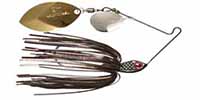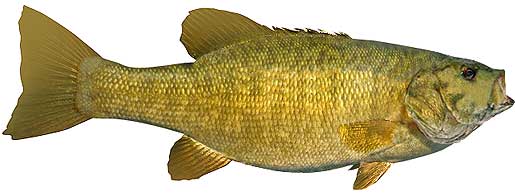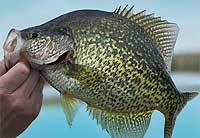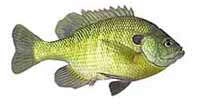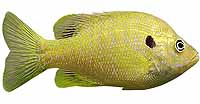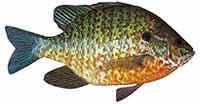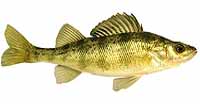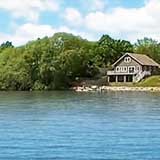Fishing Report For Lake Minnewaska, MN
By Rick Seaman
August 29, 2025
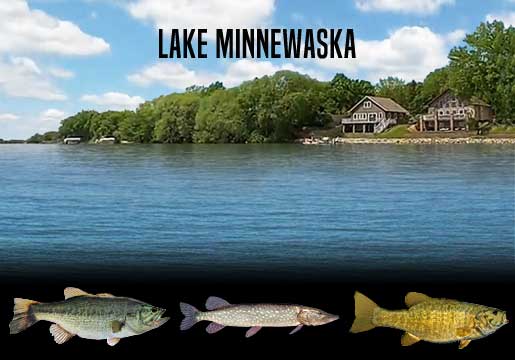
Fishing Reports
Popular Fish Species Lake Minnewaska, MN
Largemouth Bass
Current Report: Good To Very Good
SUMMER. As Summer turn into Fall, water temperatures which are now in the low 70's, will cool quickly in the shallows, drawing bass closer to shore. Bass have been feeding shallow early and late in the day, where they are being caught on topwater lures, buzzbaits, crankbaits and swimbaits. Largemouth bass here feed on shiners, small sunfish and crawfish. During the hotter parts of the day, they hang out on points, channel edges, and ledges around 15 feet deep. At times they hang out in shallower weed to ambush prey.
FALL. When Fall arrives, largemouth here will follow schools of baitfish into coves and shallow bays where swim jigs, swimbaits, crankbaits, and slow-rolled spinnerbaits have been successful in prior years. As deeper water cools, bait and bass move out to ledges, channel edges, points and humps where flutter spoons are often the ideal bait.
WINTER. Winter will isolate largemouth around slightly deeper structure, flats, points and creek channels. They can be found from 12 to 20 feet deep. During the time when the lake is frozen over, ice fishing is popular, however most ice fishing enthusiasts are targeting other species. Here they hold, feeding less frequently, awaiting warmer water to return in Spring.
SPRING. Once water temperatures rise into the low 60's, largemouth will move from deep wintering holes, to shallower water around spawning areas. Jigs, wacky-style stick worms, and vibrating jigs typically get bites around docks and holding areas just away from the shoreline. At this time they are feeding aggressively and preparing for the spawn. Once water warms into the mid to high 60's, they will move into 1 to 4 feet of water, and create nests, then lay their eggs. Immediately afterwards, females move to deeper water and males remain to guard the eggs, and then the fry. After a couple weeks, the males also move to slightly deeper water. Crankbaits, vibrating jigs, plastic worms and swimbaits are catching bass during this period.
Northern Pike
Current Report: Good
SUMMER. Northern pike scattered all around the lake after Spring. This makes it difficult to find numbers. During the day they are holding from 10 to 15 feet deep, along deep weedbeds, rock piles, islands and channel edges. Some of the larger specimens suspend in open water, just outside these feeding areas. Trolling or drift fishing is producing some nice catches, using spoons, big spinners, cut bait, and deep diving crankbaits. Early and late in the day, they move shallow to feed and can be caught around most weedy shorelines. Noisy topwater lures, spinnerbaits and Johnson spoons with curly-tail grubs, are catching nice pike shallow.
FALL. As the weather starts turning cold, water temperatures cool fastest in the shallows. This brings baitfish into shallower waters along with perch and sunfish. Northerns follow these food sources. They hang around weedbed edges, main-lake points, reefs, and rocky shorelines to ambush prey. This is a prime feeding time as they prepare for winter. It is also a good time to catch a trophy pike.
WINTER. Pike remain active in Winter, often congregating in or near remaining weedbeds, especially along the edges. Other structure options include long points, reefs, ledge drop-offs, and rocky humps, ideally nearby deeper water. Ice fishing was good here this winter. At times, when oxygen is depleted in deeper water, northerns suspend directly under the ice, where maximum oxygen is available. Other times they hold on structure in 20 to 30 feet of water, sometimes deeper. After ice out, they will be holding around 15 to 20 feet deep, nearby cover or drop offs.
SPRING. After ice out, and some time of Spring sun warming the shallows, northern pike migrate to ledges, pockets, bays and coves around 10 feet deep. Once water temperatures reach around 40 degrees, they move into even shallower areas with vegetation, to spawn. After spawning, they linger in the shallow bays for a short period. Once water temperatures rise into the 50's, they move to deeper weedbeds and shallow structures adjacent to even deeper water. Bright colors, whites and flashy lures appeal to these predators. Noisy topwater lures can also produce some spectacular strikes. Alternate between baits until you identify which one triggers the most bites for the day.
Smallmouth Bass
Current Report: Good To Very Good
SUMMER. Smallmouth bass, including many trophy-size gems, were being caught shallow early and late in the day throughout the hot Summer months. Smallmouth bass here feed on crawfish, shiners, perch, and other small small sunfish. They prefer rocky or gravel bottom areas, as this is where crayfish live. They also hang out in shallower weed beds and ambush prey. During the hotter parts of the day, they were being caught on points, humps, and ledges 10 to 20 feet deep. Often these deeper fish are part of a large school of smallmouth.
FALL. As Fall arrives, smallmouth tend to follow schools of shiners into shallow coves and bays, or along shallow flats, where spoons, drop-shots, Ned rigs, tube baits, and slow-rolled spinnerbaits, are very successful. The average fish being caught averages a couple pounds, but plenty of 4 and 5 pound smallies are being caught. Fishing shallow for smallmouth is often good on cold, windy, cloudy and rainy days.
WINTER. Winter will isolate largemouth around slightly deeper structure, flats, points and creek channels. They can be found from 12 to 20 feet deep. During the time when the lake is frozen over, ice fishing is popular, however most ice fishing enthusiasts are targeting other species. Here they hold, feeding less frequently, awaiting warmer water to return in Spring.
SPRING. When water temperatures rise into the 50's now, smallmouth move from deep wintering spots to shallower water, close by spawning areas. They feed heavily at this time on crayfish and perch. They are typically caught on jerkbaits, crankbaits, tube baits, Ned rigs, and crayfish imitating plastics. They will be bulking up for the spawn. Once water warms into the high 50's, they move into shallower water, and create nests in gravel or sand areas, then lay their eggs. Females then move to deeper water and males remain to guard the eggs, and then the fry. After a couple weeks, the males also move to slightly deeper water and feed aggressively. Finesse jigs, tube baits, Ned rigs, plastic worms, spoons and swimbaits are catching smallies during this period.
Lake Video
Fish species to fish for...
Guide to fishing for largemouth bass, smallmouth bass, black crappie, walleye, bluegill, hybrid sunfish, pumpkinseed sunfish and yellow perch at Lake Minnewaska in Minnesota.
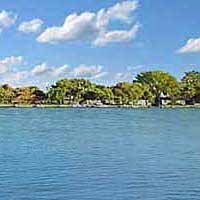
Lake Minnewaska is a 7,100-acre lake with more than 18 miles of shoreline. Largemouth bass, northern pike, smallmouth bass, crappie, walleye, bluegill and yellow perch all thrive here. Options for fishing from the bank are limited. Ice fishing is very popular in winter.
Primary fish species to catch
Click images for fishing tips and details about each species.
Today's Weather & Forecast
Fishing Boat Rentals
Click here for fishing boat rentals.
Public Boat Launch Ramps & Landings
Click here for boat ramps.
Marinas
Click here for marinas.
Fishing License
Click here for a Minnesota Fishing License.
Map - Fishing & Access
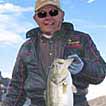
Rick Seaman is a fishing enthusiast with over five decades of fishing experience, a retired tournament fisherman, author of numerous published articles on fishing, and co-author of the book "Bass Fishing - It's not WHAT you throw, It's WHERE you throw it".
Contact Information
Woodlawn Resort & Campground
24050 N Lake Shore Dr
Glenwood, MN 56334
320 634-3619
Fishing lakes in each state
020225
Lake Minnewaska in MN
MINNESOTA


Fishing for smallmouth and largemouth bass in central MN.














